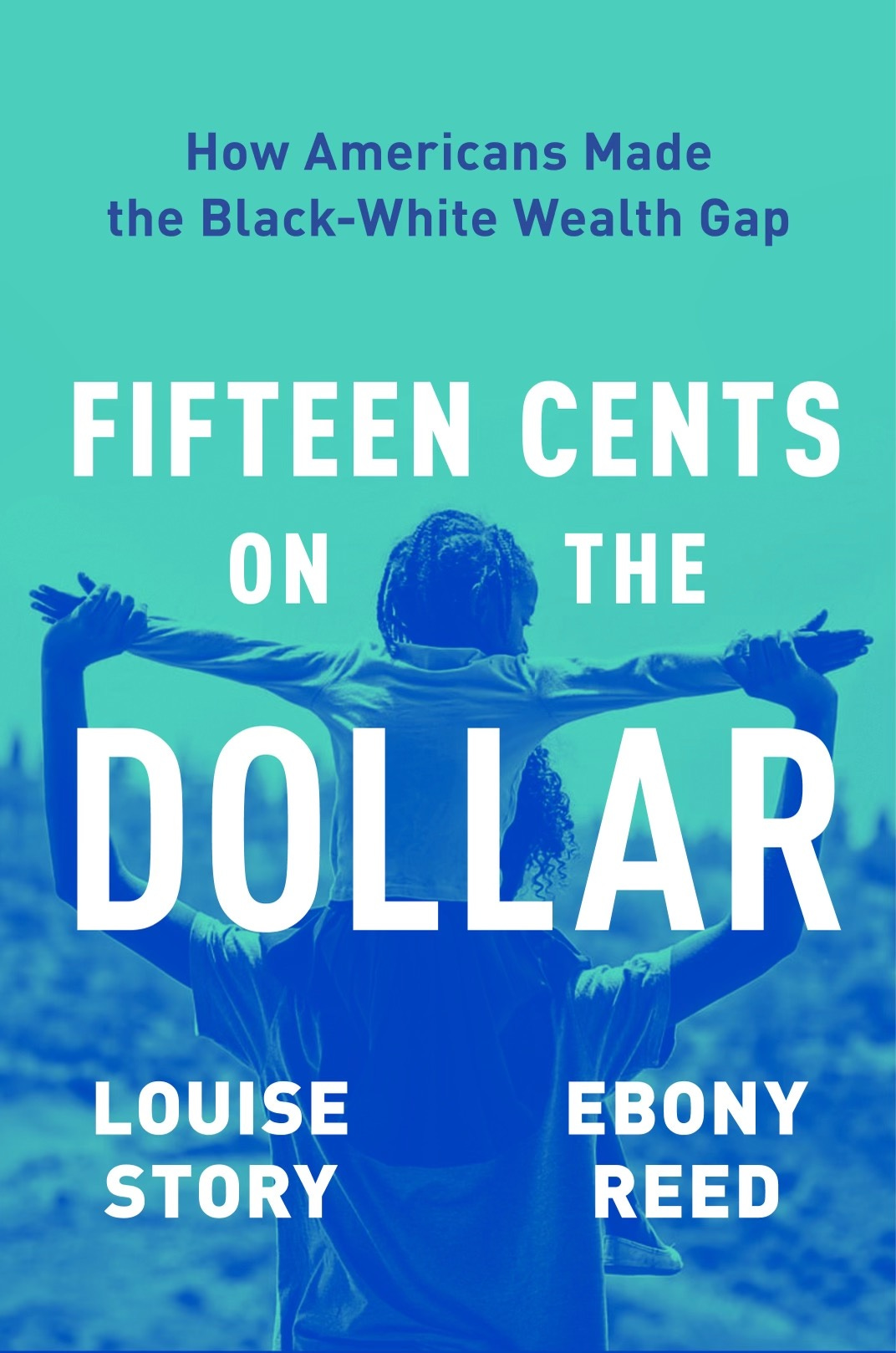How Many Years Will It Take to Close the Black-White Wealth Gap?
Our forthcoming book on the gap examines the story of the gap qualitatively -- through deeply reported, very human stories and family histories -- and quantitatively through data.
We wanted our book to provoke both feelings and empathy as well as thought and analysis. We cannot wait to hear from many of you about the experiences you have reflecting on the people in our book, but we also view the data in our book as a critical part of the experience. The reason we picked a very human cover — showing a young girl on the shoulders of her father — is because our book is people-oriented. We all stand on the shoulders of our parents and of prior generations.
But we chose a title that is number-oriented. “Fifteen Cents on the Dollar” is the Black-white wealth gap. Typical Black families have 15 percent of the wealth of typical white families.
Speaking of data, we wanted to share another statistic today: projections of the length of time it could take until the Black-white wealth gap is closed, based on past rates of change. Before we get to that, we want to thank you again for checking out our book here: www.15cents.info and we also want to note that you can unsubscribe below if you don’t want to receive our occasional posts on racial wealth gaps.
“Market Mondays”
We were on “Market Mondays” this week on Earn Your Leisure. You can view the episode here. (The link will start playing where they introduce us, at minute 35.)
We talked about many points, including what the future holds for the Black-white wealth gap… and how long it might take for the gap to close.
One Hundred Years
So how long will it be until the typical Black family’s wealth is 1:1 with the wealth of a typical white family? On Market Mondays, we gave a simple, quick figure: One Hundred Years.
The length of time will depend on many factors, including whether inputs to the gap — like the rate of home ownership among races — change. Our book goes through nuanced storylines and nuanced scenarios and explains which factors will affect the wealth gap the most.
But simply speaking, you can look at the rate the gap has been closing in recent years to come up with some possibilities. Using data about median levels of wealth from the Federal Reserve, here’s our math:
-If the Black-white wealth ratio continues closing in coming years at the rate that it did from 1989 until 2022, the length of time it will take to reach a 1:1 ratio is …. 291 years.
-If the Black-white wealth ratio increases at the rate it did from 2013 until 2022, that time until it reaches an equal 1:1 ratio is … 120 years.
-If the Black-white wealth ratio increases at the pace it did from 2019 until 2022, it would reach 1:1 …. in 91 years.
It’s hard to know exactly what rate the ratio will increase, but with reforms that have occurred in society, it’s reasonable to think perhaps the ratio will go up at one of the faster rates. Optimistically, if the Black-white wealth gap closes at the rate it was moving most recently, from 2019 to 2022, that would bring wealth parity in the year 2113.
Learn More
If these datasets interest you, you are welcome to join one of the virtual group talks we will hold this spring to discuss these issues in-depth. The sign up is here. We will also continue holding public events and will provide updates here on Substack about upcoming ones. Last week, we held a successful gathering in Kansas City, and more are in the works. Here’s one scheduled in Montgomery, Ala.
Thank you for reading and sharing our work with other people.




